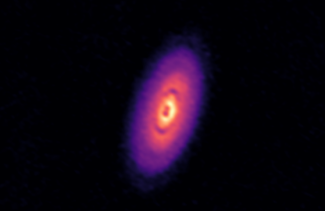A University of Georgia research team has confirmed evidence of a previously unknown planet outside of our solar system, and they used machine learning tools to detect it.
A recent study by the team showed that machine learning can correctly determine if an exoplanet is present by looking in protoplanetary disks, the gas around newly formed stars.
The newly published findings represent a first step toward using machine learning to identify previously overlooked exoplanets.
“We confirmed the planet using traditional techniques, but our models directed us to run those simulations and showed us exactly where the planet might be,” said Jason Terry, doctoral student in the UGA Franklin College of Arts and Sciences department of physics and astronomy and lead author on the study.
“When we applied our models to a set of older observations, they identified a disk that wasn’t known to have a planet despite having already been analyzed. Like previous discoveries, we ran simulations of the disk and found that a planet could re-create the observation.”
According to Terry, the models suggested a planet’s presence, indicated by several images that strongly highlighted a particular region of the disk that turned out to have the characteristic sign of a planet — an unusual deviation in the velocity of the gas near the planet.
“This is an incredibly exciting proof of concept. We knew from our previous work that we could use machine learning to find known forming exoplanets,” said Cassandra Hall, assistant professor of computational astrophysics and principal investigator of the Exoplanet and Planet Formation Research Group at UGA. “Now, we know for sure that we can use it to make brand new discoveries.”
Image of HD 142666 taken by ALMA.

